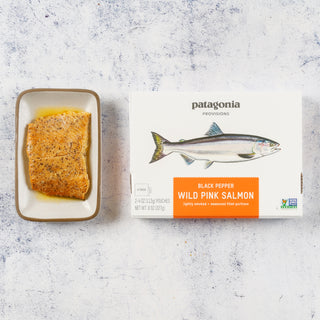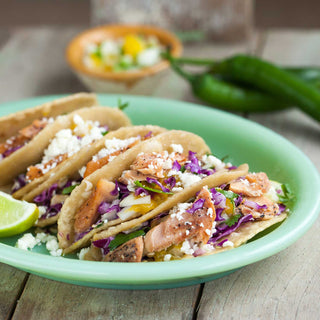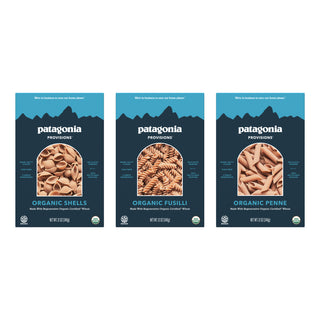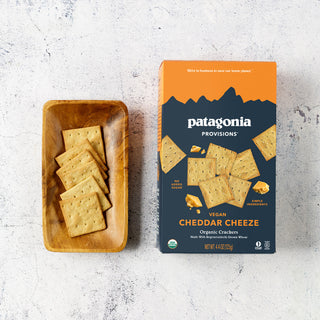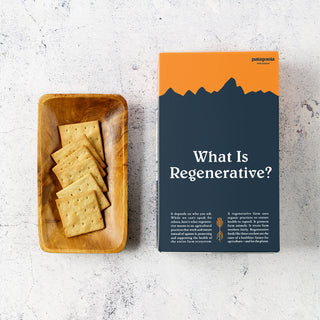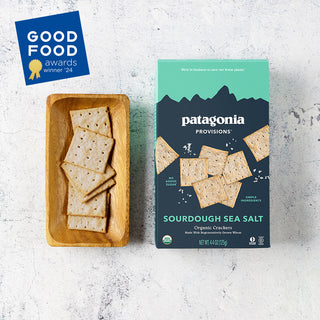Chef Dan Barber, cofounder of Row 7 Seed Company, talks to top seed breeders about the keys to plant flavor and nutrition— and why regionalized vegetables should be the way of the future.
FOUNDED IN 2018, Row 7 is the first seed company to pair chefs, farmers and plant breeders in the development of delicious, original varieties of fruits and vegetables. The goal? A new approach to changing our food system — one that begins with the seed.
Instead of creating plants that satisfy the priorities of conventional seed companies, such as shelf life and uniformity, Row 7 prioritizes flavor above all else. That helps shape other business decisions, like producing only organic, non-GMO seeds out of conviction that the most flavorful and resilient plants are those that fend for themselves, without chemicals and with a full genetic inheritance evolved over time. Also, Row 7’s collaborators suspect that healthy, organic soil maintained with regenerative practices—for example, cover cropping and crop rotations—might boost a plant’s nutrition along with its flavor. It’s possible that soil health, flavor and nutrient density are really one interconnected subject.
To explore these ideas a little, Barber invited organic-vegetable breeder and Row 7 cofounder Michael Mazourek to sit down with him and two other top plant breeders in the country: Irwin Goldman and Bill Tracy.
DAN
I thought we could just kick things off by exploring the nexus between flavor, nutrition and soil health. So my question is just that: Does such a relationship exist between flavor, nutrition and soil?
IRWIN
There does seem to be some relationship between flavor and production conditions for root vegetables. Organic carrots, for example. In taste tests, people just know it comes from an organic farm. I don’t know what it is; it could be that plants are less stressed in those environments, maybe.
DAN
Rachel Carson wrote about this in particular—carrots seemed to soak up chemicals like a sponge. Is there a scientific explanation?
IRWIN
I don’t know the answer to that. Maybe there isn’t one answer?
More than 50 years ago, Rachel Carson did write in Silent Spring that carrots grown with chemical pesticides will take up those pesticides, and this is almost certainly true for all root vegetables. Our conventional production systems in agriculture use those chemicals to protect carrot plants, but in most production systems the crop is both stressed from the pests and stressed by the pesticides, which can harm the plants while protecting them—similar to how strong medication can have side effects on a person.
One possible reason that carrots grown in organic environments may be preferred by consumers is that the root itself may be less stressed. Stress can often lead to the emergence of harsh flavors, caused by bitter terpenoids in carrot roots, which can taste like turpentine. These astringent compounds are part of the plant’s natural defense, and I know from experience that selecting for pest resistance in carrots without considering flavor can result in carrots that have turpentiney flavors because the natural defenses have been mobilized.
One of the most distinctive things about organic farms is the high level of soil health, partly due to high levels of organic matter and active soil microorganisms. Because carrot root quality depends on soil health, carrots produced in organic systems may offer higher eating quality. I would say that for root vegetables in general, it may be worth investigating the close relationship between soil health and root quality.
DAN
Michael, do you see any of this in your work?
MICHAEL
A few years ago I did an experiment at Cornell. I took over a greenhouse and planted the same variety of arugula in different soil types. One was straight topsoil with chemical fertilizer; the other was the same topsoil blended with organic compost to achieve the same nutrient levels, as best we could match the two.
When we brought the randomized samples to the Blue Hill kitchen to taste, the cooks could say this is the organic one that tastes like the growers we buy from, and this is the one we avoid. Everyone who tasted the arugula from the conventional soil said it was hot and spicy. But from the organic it was sweet, and the spiciness tingled your nose. So that’s when I got converted.
Some of this is related to environmental stress, like Irwin said, but there’s also this other layer that’s about plant communication. Plants in the same field are sending out chemical signals to figure out who is in their environment and how they should respond to that. And many of those compounds have pronounced nutritional and flavor aspects. When we’re tasting, we’re eavesdropping on some of this conversation.
BILL
In organic systems the whole thing is different in terms of availability of nutrients because of crop rotations. All healthy organic farms are rotating different crops, and the previous crops— the corn or beans or carrots—have an enormous impact on the new incoming crops in terms of plant health. We know that for sure. This is a critical component of regenerative agriculture.
IRWIN
That’s a great point. It amazes me how often some growers grow vegetables like beets many years in a row on the same ground. It’s amazing to me that they still do that! It invites disease; it’s so crazy. You would never find that in a diversified organic farming system.
DAN
And we know that it has a big impact on flavor too. A truly delicious carrot can only come from the right kind of soil—which is almost always organic soil. So here I am talking to three leading plant breeders in the country and basically you’re all saying that for the future we’re going to have to be more attentive to the soil environment to express genetics.
ALL
Yes!
MICHAEL
There’s not one script for how the soil should be. We need the soil ecology to be able to get that higher level of flavor and nutrition, but there’s not just one instruction list on how you do it. That’s where the skill of the farmer and knowing their system, knowing their land, can optimize that.
The Downside of Mass-Market Vegetables
DAN
Let’s get back to breeding, though. For chefs and excited diners, there is a pull towards foraging not just for the novelty but also because the flavors are so pure and so concentrated. In your breeding work, do any of you think about trying to approximate that flavor by using genetics from a plant’s wild ancestor?
BILL
I just gotta say that in many ways domestication and then modern breeding have directed a lot of these things to frankly the lowest common denominator. To what most people like. And to do that you’re gonna remove some of those flavors, like bitterness. Some people love those elements, but if you want to sell it to as many markets as you can, the tradition and condition of breeding is probably to minimize as many of those things as possible. For example, our fruits and vegetables are important sources of beneficial antioxidants, but many of these chemicals also impart bitter and astringent tastes as do some of their breakdown products. Some of these flavors may appeal to some people but often are off-putting to others. Over the years I have incorporated a lot of tropical maize germplasm into sweet corn. Often, I detect unusual flavors and aromas. Because they don’t fit the mass market I usually eliminate them.
DAN
It’s crazy to think about all of that potential that’s been ignored in service of a commodity system. Breeding for—as you say—the lowest common denominator means that we’ve diluted the flavor and nutrition of our food.
IRWIN
Look at the strawberry; the strawberry is one of the best examples of that. Plant breeders have contributed to the poor flavor through chromosome manipulation. The wild strawberry’s a diploid, meaning it has two sets of chromosomes, while the modern cultivated strawberry that we get from California and Mexico is an octoploid—it’s got eight sets—so we’ve cranked up the ploidy level to make them huge. And in so doing we made them so much less tasty than their diploid counterparts. I mean, it’s a travesty what happened with the strawberry. And yet it’s obvious why we did it. Increasing the number of chromosome sets, such as going from a diploid to a tetraploid or from a tetraploid to an octoploid, results in larger cells in the plant and larger fruits. The large fruits are, of course, sought after by consumers; but size doesn’t necessarily equal culinary quality. And with the strawberry, the tremendous accomplishment of increasing the chromosome number—a definite success in plant breeding—was not accompanied by an increase in eating quality or nutrition. Instead, it was accompanied by an increase in tonnage.
DAN
So how do we change this system? What’s interesting to me is that what Bill described as the most nutritionally significant compounds—the ones that impart more complex flavors like bitterness—are also the most exciting to a chef. I think it falls to us to encourage people to appreciate and utilize those flavors, in the same way people have come to appreciate arugula and broccoli rabe. We can help expand the definition of what’s covetable.
The Case For Regionalized Production
MICHAEL
In plant breeding there’s a list of the things we want to keep and improve, and things we want to reduce—in other words, qualities we like and qualities we don’t like, and we tend to put things in one group or the other. And there’s collateral damage in the process of putting things in the plus and minus columns. But I think we’re beginning to revisit some of the qualities that have typically been ignored or selected against by breeders. Like coffee—we’ve seen a shift towards people appreciating complexity.
What if we could do that for vegetables? To achieve that you’re supporting land use that’s much more sustainable, and that translates to a system that works better in the long run.
BILL
I think that’s what’s so great about this conversation. From my perspective—and I think for all of us—for most of our careers we’ve been breeding for a kind of industrial production. What is happening now through this kind of conversation is that there’s opportunities to breed for flavor, number one, but also to start to do these evaluations around different systems, and different regions. Let’s say we do come up with a sweet-corn variety with a unique flavor profile, then we can say, Hey this one really is adapted to Madison, Wisconsin, and whatever’s going on here in the organic soil in Madison, that’s where this thing really does that. The science on this is really just beginning, I think. We really haven’t paid enough attention to how different farming systems affect the flavor.
DAN
That sounds exactly right for where the food industry is going—more local, more nutritious, and 100 percent more delicious. Let’s raise a glass to that, and to you guys, for helping make this happen.
Cofounder of Row 7 Seed Company; Associate Professor of Plant Breeding and Genetics at Cornell University
Michael specializes in the same varieties he grew as a child in his family's garden. Studying biochemistry illuminated for him the importance of phytochemicals in plants and their protective role in human health. Today he breeds vegetables to improve their phytochemical content and trains others in his craft.
IRWIN GOLDMAN
Horticulture Department Chair, University of Wisconsin-Madison
Irwin’s lab focuses on the breeding and genetics of cross-pollinated vegetable crops—primarily carrot, onion and beet—with an emphasis on their nutritional value, color, flavor and shape. He champions organic seed production and open-source breeding.
BILL TRACY
Clif Bar and Organic Valley Chair in Plant Breeding for Organic Agriculture, University of Wisconsin – MadisonBill teaches agronomy and biology and directs a graduate breeding program on improving sweet corn. His areas of research include the development of pest resistance in maize as well as participatory breeding and on-farm research for organic crop production.
DAN BARBER
Cofounder of Row 7 Seed Company; chef and co-owner of Blue Hill and Blue Hill at Stone Barns restaurants.
Author of the New York Times bestselling book The Third Plate: Field Notes on the Future of Food, Dan works to bring the principles of good farming directly to the table. He has received six James Beard Foundation awards, including the Leadership Award in 2017.









